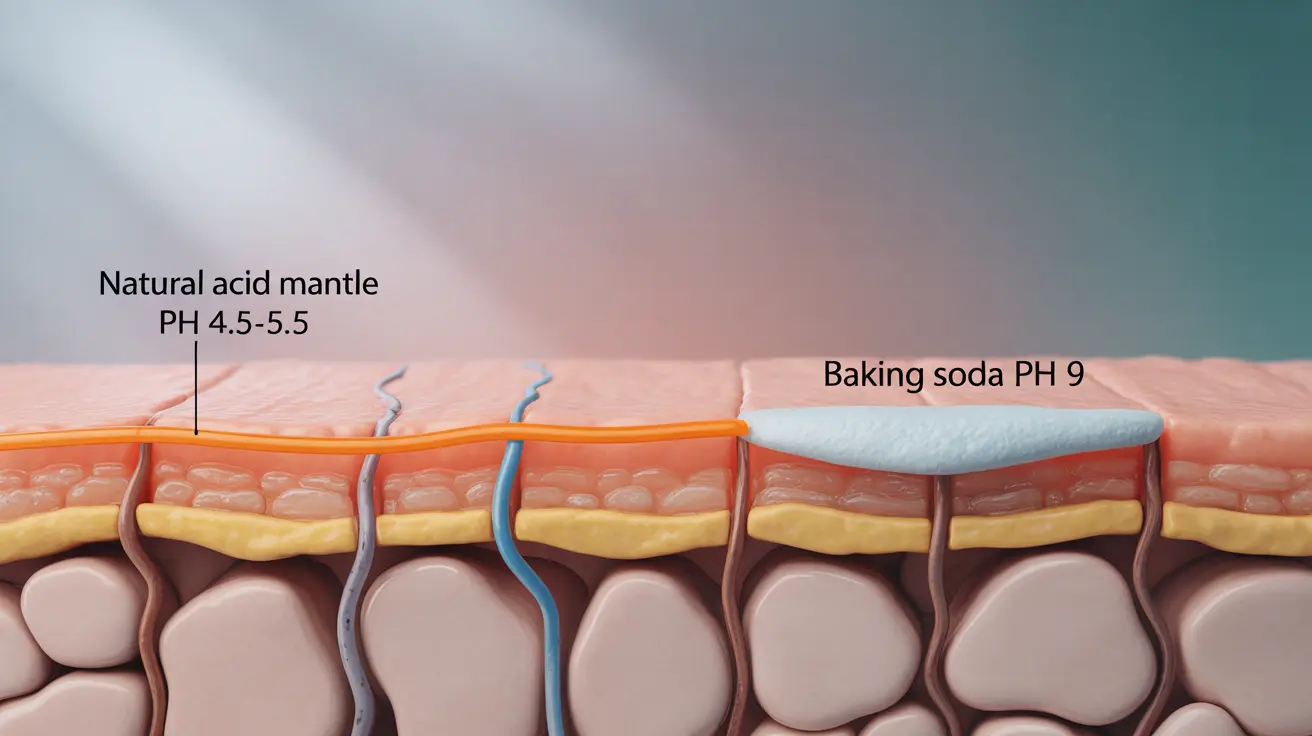Many people are curious about using baking soda on their skin as a natural and cost-effective skincare solution. While this common household ingredient has certain properties that might seem beneficial, it's crucial to understand both its potential uses and significant risks before incorporating it into your skincare routine.
In this comprehensive guide, we'll explore what dermatologists and skin experts say about using baking soda on skin, examining the scientific evidence behind its effects and providing clear guidance on whether it's truly safe for your skin.
Understanding Baking Soda's Properties and Effects on Skin
Baking soda, or sodium bicarbonate, is highly alkaline with a pH of around 9, while healthy skin maintains a slightly acidic pH of about 4.5-5.5. This significant pH difference explains many of the concerns dermatologists have about its use in skincare.
- Disrupt the skin's natural acid mantle
- Alter beneficial bacterial balance
- Create microscopic tears in the skin barrier
- Lead to increased sensitivity and irritation
Potential Benefits vs. Documented Risks
Limited Benefits
While some people claim positive results, any benefits from using baking soda on skin tend to be temporary and potentially outweighed by risks:
- Temporary oil absorption
- Mild exfoliation
- Possible pH balancing of very oily skin
- Short-term improvement in appearance of acne
Significant Risks
Dermatologists highlight several concerning effects of regular baking soda use:
- Severe skin barrier disruption
- Increased sensitivity and redness
- Excessive dryness and irritation
- Potential for chemical burns
- Acceleration of aging due to barrier damage
- Worsening of existing skin conditions
Safe Alternatives to Baking Soda
Instead of risking skin damage with baking soda, experts recommend these proven alternatives:
- Gentle chemical exfoliants (AHA/BHA)
- Professional-grade clay masks
- pH-balanced cleansers
- Dermatologist-approved acne treatments
- Over-the-counter exfoliating products
When Baking Soda Might Be Appropriate
In very limited circumstances, baking soda may be used with extreme caution:
- Brief, diluted baths for specific conditions
- Spot treatments for fungal infections (under medical guidance)
- Emergency pH neutralization of chemical exposure
Frequently Asked Questions
Is it safe to use baking soda on my face for acne or exfoliation?
No, dermatologists strongly advise against using baking soda on facial skin. Its high pH and abrasive nature can severely damage your skin barrier, leading to increased inflammation, sensitivity, and potentially worsening acne in the long term.
What are the risks of applying baking soda regularly on sensitive or dry skin?
Regular baking soda application on sensitive or dry skin can cause severe irritation, barrier damage, increased dryness, redness, and potential chemical burns. It may also exacerbate existing skin conditions and create new sensitivities.
How can baking soda baths help with skin conditions like eczema or fungal infections?
While some people use diluted baking soda baths for certain skin conditions, this should only be done under medical supervision. For most skin conditions, especially eczema, baking soda can worsen symptoms and trigger flare-ups.
How should I properly use baking soda on my skin to avoid irritation or damage?
The safest approach is to avoid using baking soda directly on your skin. If you must use it, only do so in highly diluted forms, for very brief periods, and never on broken or sensitive skin. Always perform a patch test first.
Why do dermatologists recommend against using baking soda as a regular skincare treatment?
Dermatologists oppose regular baking soda use because it disrupts the skin's natural pH balance, damages the protective barrier, and can cause long-term sensitivity issues. There are many safer, more effective alternatives available for all skin concerns.
Remember, while natural remedies can be appealing, not all natural ingredients are beneficial for skin health. When in doubt, consult with a dermatologist for personalized skincare recommendations based on your specific skin type and concerns.




